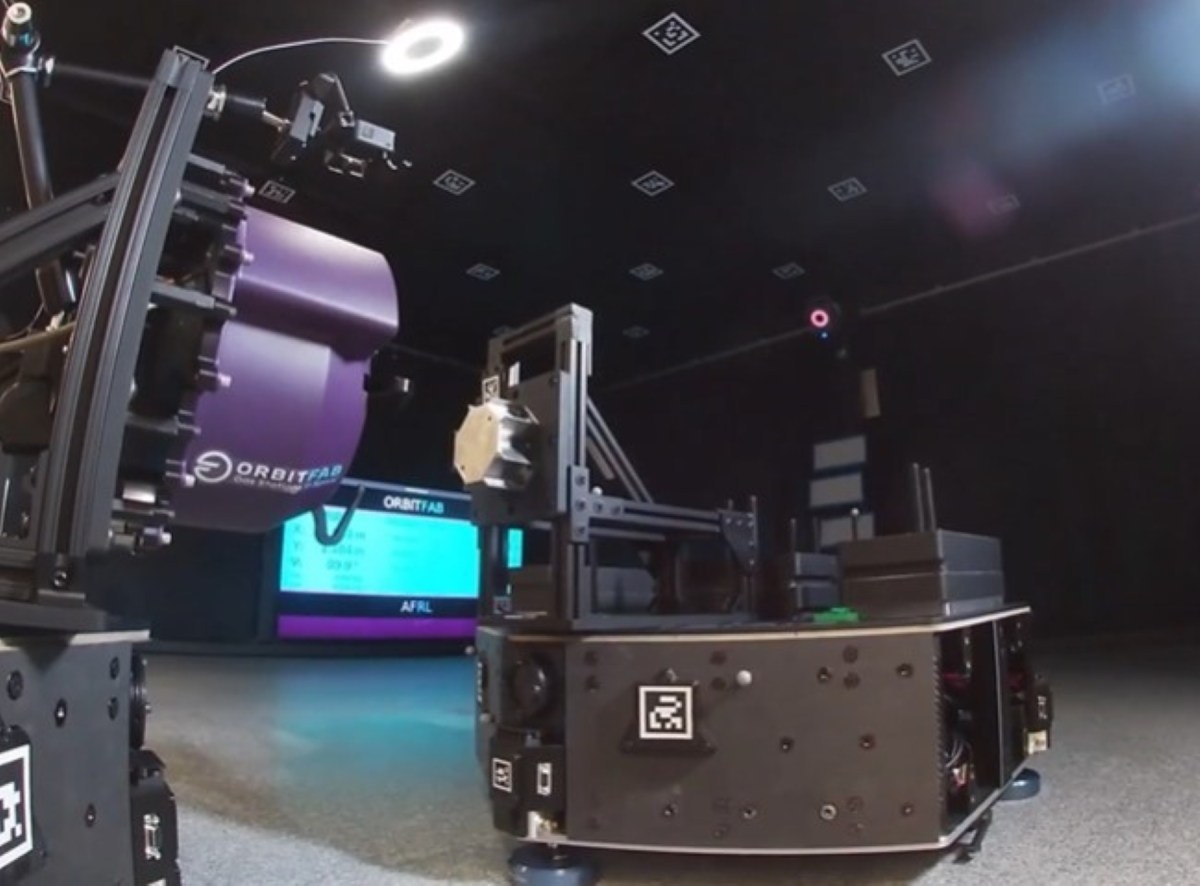WASHINGTON — Orbit Fab, a Colorado-based startup developing hardware for in-space satellite refueling, announced a successful test of its fueling nozzle known as GRIP (Grapple, Reposition, and Interface Payload) which is intended to dock with satellites and transfer propellant.
CEO Daniel Faber said in an interview that the testing, conducted at an Air Force Research Laboratory facility at Kirtland Air Force Base in Albuquerque, New Mexico, demonstrated GRIP’s ability to dock with a satellite equipped with Orbit Fab’s RAFTI (Rapidly Attachable Fluid Transfer Interface) refueling port.
“The test showed that GRIP can establish and maintain a secure fluid connection, enabling in-orbit refueling operations,” Faber explained. The GRIP device, about the size of a basketball, simulated the replenishment of a satellite low on fuel.
GRIP’s active docking and fluid transfer mechanism is designed to work in tandem with RAFTI, which replaces traditional fill and drain valves on satellite propulsion systems. Faber said this combination eliminates the need for complex robotic arms in refueling operations, simplifying the process significantly.
Illustration of Orbit Fab’s GRIP refueling nozzle approaching a client satellite. Credit: Orbit Fab
The successful test comes as Orbit Fab positions itself in what appears to be a two-horse race with defense giant Northrop Grumman to capture the emerging military satellite refueling market.
The U.S. Space Force is actively evaluating both companies’ refueling technologies, said Col. Joseph Roth, director of the Space Systems Command’s innovation and prototyping directorate.
Speaking at the recent “State of the Space Industrial Base” conference in Albuquerque, Roth emphasized the importance of on-orbit refueling. “We want to get those technologies on orbit, test them out in an operational environment, and hedge our bets because we don’t know which one will work, and which one will work better than the other,” Roth said, referring to Orbit Fab’s and Northrop Grumman’s refueling hardware.
“Space is a warfighting environment, and the ability to maneuver is a huge distinct advantage for our forces,” Roth said. He also noted that the government will likely need to “prime the pump” to kickstart the market, as a robust commercial marketplace for in-space refueling has yet to emerge.
Orbit Fab’s next major milestone will be the Space Force’s Tetra-5 experiment in 2025, where three fuel delivery vehicles using the GRIP interface will attempt to dock and transfer propellant to three satellites in geostationary orbit.
The company is now moving towards flight qualification for GRIP, which will involve environmental testing to ensure its readiness for space operations.
“We will be providing GRIP and fluid transfer systems to multiple partners who wish to add fuel delivery capability to their satellite servicing vehicles,” said Faber. Simultaneously, Orbit Fab is in discussions with manufacturers to license production of its RAFTI refueling port.
